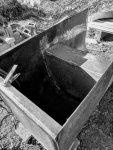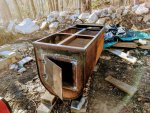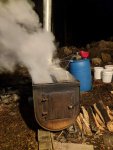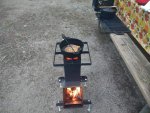18 years welder and instructor.
+1 on getting some c25 gas for that machine. Flux cored wire welds but on a small machine like that, it's tough to make anything that looks decent. Adding gas at least gives your half a chance. It's easier to see the pool, less spatter, less smoke and cleaner finished welds.
Stick to .023 or .030 solid wire for that machine. (With gas if you can...c25 is a mix of argon and Co2)
Keep the nozzle clean and fresh contact tips at the ready.
Keep nozzle close, 1/4 or so away while welding for good gas coverage.
Dont kink the cable while welding, try to keep it straight. The wire has to get fed that and if you bend it or loop too tight it won't feed smooth.
Wear good ppe,decent gloves and decent helmet with leather shoes and long sleeves. Aside from getting hurt, there is nothing more distracting while trying to make a good weld than getting a hot spark when you don't want it.
Use the inside panel to make your settings and adjustments whenever possible. They are usually quite accurate if you follow the chart but some fine tuning is sometimes necessary based on the circumstances.
Make sure you have a clean ground for your workpiece clamp and keep it close to the weld area. Grind off paint and rust as needed at ground location and weld location.
If it feels like the wire is pushing off the metal, the wire feed is too high or voltage is too low. It's a ratio that you have to balance. Run as hot as the base metal will allow without making holes and adjust the wire feed to flow smooth into the pool without burning back or pushing off the base metal.
Make sure your power source is good, don't plug into a 15 amp outlet fed with 75' of 14 gage wire plus an extension cord. You'll end up dealing with a drop in voltage and lots of frustration. Try to use a deticated 20 amp circuit and minimize extension cords unless properly sized as indicated in the owners manual.
Watch the puddle, get comfortable and have fun.
Theres a lot more but those are some general tips of common issues off the top of my head. Read, watch videos online and weld. Arc time is key, it takes lots of practice and every situation requires a different skill set and teaches you something new.







